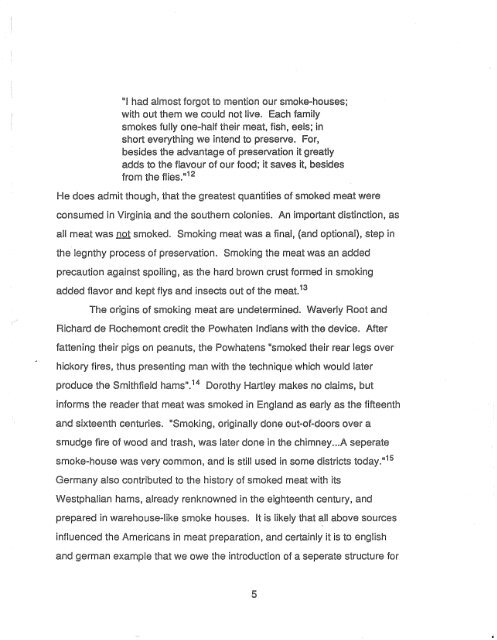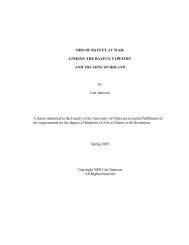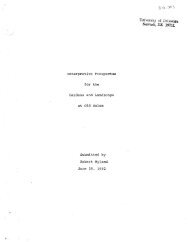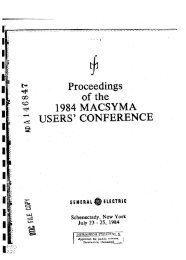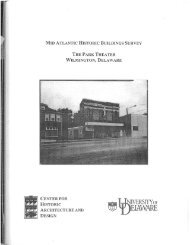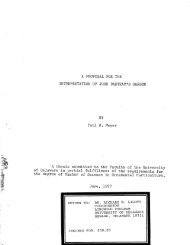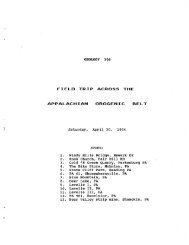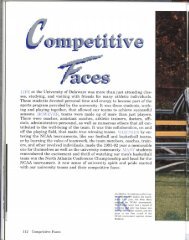mechanics and functions of a smoke house - University of Delaware ...
mechanics and functions of a smoke house - University of Delaware ...
mechanics and functions of a smoke house - University of Delaware ...
Create successful ePaper yourself
Turn your PDF publications into a flip-book with our unique Google optimized e-Paper software.
"I had almost forgot to mention our <strong>smoke</strong>-<strong>house</strong>s;<br />
with out them we could not live. Each family<br />
<strong>smoke</strong>s fully one-half their meat, fish, eels; in<br />
short everything we intend to preserve. For,<br />
besides the advantage <strong>of</strong> preservation it greatly<br />
adds to the flavour <strong>of</strong> our food; it saves it, besides<br />
from the flies.,,12<br />
He does admit though, that the greatest quantities <strong>of</strong> <strong>smoke</strong>d meat were<br />
consumed in Virginia <strong>and</strong> the southern colonies. An important distinction, as<br />
all meat was l1Q1 <strong>smoke</strong>d. Smoking meat was a final, (<strong>and</strong> optional), step in<br />
the legnthy process <strong>of</strong> preservation. Smoking the meat was an added<br />
precaution against spoiling, as the hard brown crust formed in smoking<br />
added flavor <strong>and</strong> kept flys <strong>and</strong> insects out <strong>of</strong> the meat,13<br />
The origins <strong>of</strong> smoking meat are undetermined. Waverly Root <strong>and</strong><br />
Richard de Rochemont credit the Powhaten Indians with the device. After<br />
fattening their pigs on peanuts, the Powhatens "<strong>smoke</strong>d their rear legs over<br />
hickory fires, thus presenting man with the technique which would later<br />
produce the Smithfield hams".14 Dorothy Hartley makes no claims, but<br />
informs the reader that meat was <strong>smoke</strong>d in Engl<strong>and</strong> as early as the fifteenth<br />
<strong>and</strong> sixteenth centuries. "Smoking, originally done out-ot-doors over a<br />
smudge fire <strong>of</strong> wood <strong>and</strong> trash, was later done in the chimney ...A seperate<br />
<strong>smoke</strong>-<strong>house</strong> was very common, <strong>and</strong> is still used in some districts today.,,15<br />
Germany also contributed to the history <strong>of</strong> <strong>smoke</strong>d meat with its<br />
Westphalian hams, already renknowned in the eighteenth century, <strong>and</strong><br />
prepared in ware<strong>house</strong>-like <strong>smoke</strong> <strong>house</strong>s. It is likely that all above sources<br />
influenced the Americans in meat preparation, <strong>and</strong> certainly it is to english<br />
<strong>and</strong> german example that we owe the introduction ot a seperate structure for<br />
5


